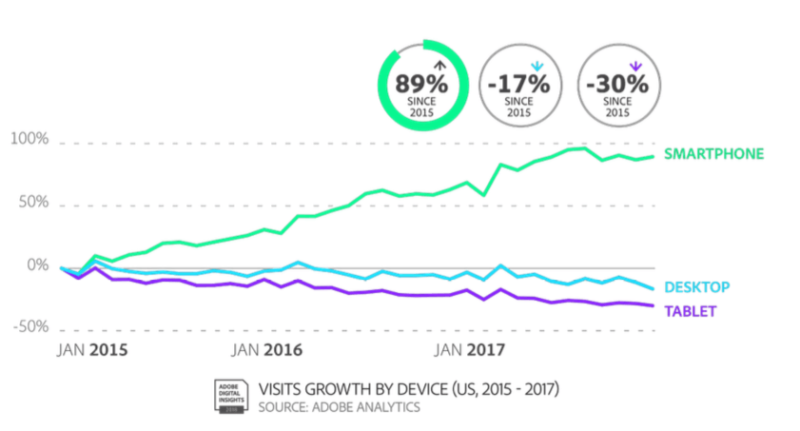Report: 5G will drive $12 billion in new mobile commerce revenue by 2021
Adobe report: Smartphone traffic is growing but visits are shorter.

Mobile page speed matters. And new data from Adobe shows that with speed comes revenue.
Adobe Digital Insights has released a report called “A Mobile-First World,” which contains data on US and international smartphone usage patterns. The company says it’s based on “a trillion visits” to more than 5,000 websites from 2015 to the end of 2017. There was also a companion survey of 4,000 respondents in the US, the UK, Germany and France.
The coming of 5G will translate into an additional $12 billion in mobile commerce revenue for retailers in three years, according to Adobe projections. That assumes a smooth, scheduled rollout of 5G networks. Nonetheless, it’s a clear statement that when friction is removed from the user experience, people respond.
The “revenue per visit” gap between the desktop and smartphones has been closing over the past couple of years. In January of 2015, smartphone visits were worth about 20 percent of desktop visits. At the end of last year, they were worth about 30 percent.
Smartphone visits grow, while desktop and tablets decline

While faster networks, sites and apps will mean more revenue, Adobe also says that smartphone session visits have shortened by roughly 10 percent in three years. That includes number of pages visited and time spent per visit. So even as there’s been smartphone growth, users appear to be less patient.
Traffic to websites coming from the desktop and tablets have declined during the same period of time. Only smartphone visits have grown. Smartphone visits have grown 89 percent since 2015, while desktop traffic has declined 17 percent. However, desktop traffic still dominates with about 61 percent of visits.
Another interesting finding, which may be more correlation rather than causation, is that higher screen resolution is tied to higher mobile order value. Adobe found that every additional 10,000 pixels translates into a $1.18 bump in order value. However, on the desktop, strangely, higher pixel counts are connected to diminishing order value.
It may be that higher-resolution phones are more expensive and tend to be owned by people who have more money and spend more online. But the higher-resolution, lower-value desktop equation is curious.
In the US, Adobe found that iOS devices (mainly iPhones) were responsible for 59 percent of mobile visits. That compares with Apple’s 45 percent market share in the US. Outside the US, Adobe found that Europeans were less likely to have tried augmented reality on their phones and less likely to use voice search and digital assistants “in front of others.”
The full report is available for download here.
Opinions expressed in this article are those of the guest author and not necessarily MarTech. Staff authors are listed here.
Related stories
